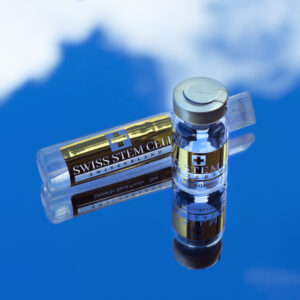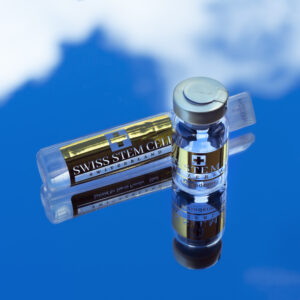4th Generation - iPSC
iPSCs has the ability of continuous cell renewal a.k.a. Regeneration. With three primary cell layers – ectoderm, endoderm and mesoderm, they are able to regenerate more than 220 cell types (all systems) in the body – the most efficient Regenerative Medicine.
Induced Pluripotent Stem Cell therapy is a complementary biological treatment which is employed to combat symptoms of premature ageing and chronic degenerative diseases. These active cellular materials are procured from specially bred sheep. They are then induced with gene encoding transcription converting them to pluripotent stem cells (iPSCs), with better differentiation into any cell type (self-renewing, proliferation and dividing rate), and of course to trigger efficient repair, rejuvenation and regeneration of the human body.
Induced pluripotent stem cells (also known iPSCs ) are a type of pluripotent stem cell that can be generated directly from procured adult sheep cells (no killing of embryos and foetuses). The iPSC technology was pioneered by Shinya Yamanaka’s lab in Kyoto, Japan, who showed in 2006 that the introduction of four specific genes encoding transcription factors could convert these cells into pluripotent stem cells. He was awarded the 2012 Nobel Prize along with Sir John Gurdon “for the discovery that mature cells can be reprogrammed to become pluripotent.”
Pluripotent stem cells hold great promise in the field of regenerative medicine. Because they can propagate indefinitely, as well as give rise to every other cell type in the body (such as neurons, heart, pancreatic, and liver cells), they represent a single source of cells that could be used to replace those lost to damage or disease.
The most well-known type of pluripotent stem cell is the embryonic stem cell. However, since the generation of embryonic stem cells involves destruction (or at least manipulation) of the pre-implantation stage embryo (a spherical structure termed a “blastocyst”), there has been much controversy surrounding their use. – [Wikipedia]
These induced pluripotent stem cells further undergo a complex series of processes such as cryogenic activity and lyophilising to preserve the biological composition and integrity of the cells. The lyophilised induced pluripotent stem cells then can be securely transported around the world and reactivated again through reconstitution (where the lyophilised cells are hydrated with sterilised water). The products of these exclusive processes are of the International Federation of Cell Therapy Professionals, USA & Europe.
Induced pluripotent stem cells are pluripotent (the ability of continuous cell renewal a.k.a. Regeneration), that is, they are able to differentiate into all derivatives of the three primary germ layers: ectoderm, endoderm, and mesenchyme – together they can regenerate more than 220 cell types in the adult body.
Showing all 3 results
-
4th Generation - iPSC
Endoderm Stem Cells (iPSC)
Swiss iPSC Ectoderm
(0 reviews)CHF5,000.00 Add to basket -
4th Generation - iPSC
Mesoderm Stem Cells (iPSC)
Swiss iPSC Ectoderm
(0 reviews)CHF5,000.00 Add to basket -
4th Generation - iPSC
Ectoderm Stem Cells (iPSC)
Swiss iPSC Ectoderm
(0 reviews)CHF5,000.00 View products


